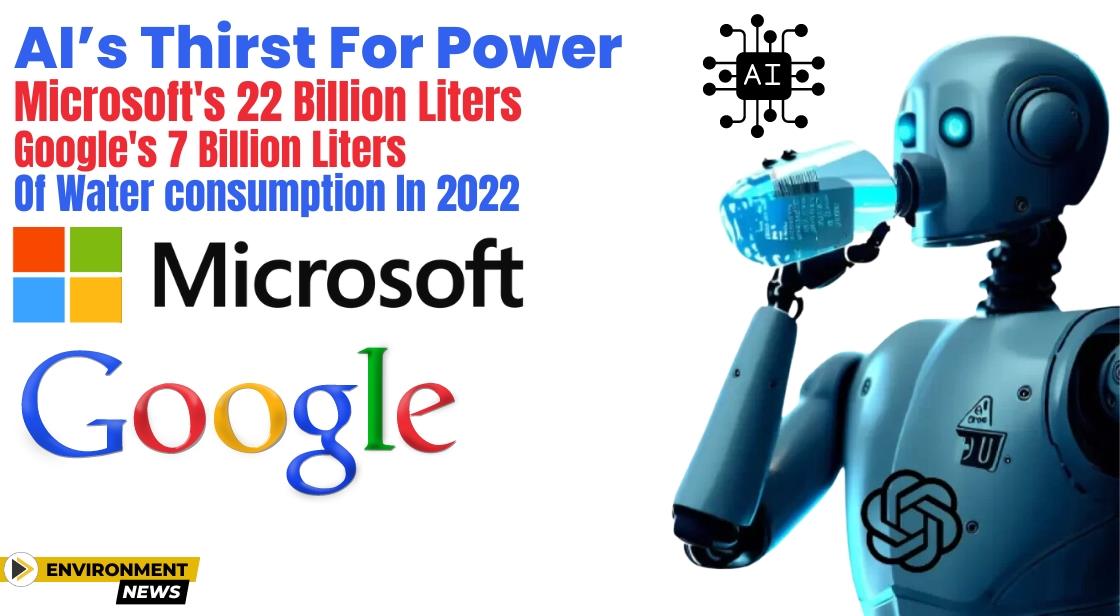Tech Giants Thirst for Power: Microsoft's 22 Billion Liters, Google's 7 Billion Liters of Water in 2022

News Synopsis
Major technology companies, including Microsoft, Google, and Meta, have significantly increased their water consumption to power data centers, raising concerns about environmental impacts. As generative artificial intelligence (AI) advances, the demand for computing power has surged, intensifying the environmental consequences of cooling systems in massive server farms.
Key Points:
-
Water Consumption Surge: Microsoft, Google, and Meta have witnessed a substantial surge in water consumption for cooling data centers, particularly with the rise of generative AI models that require extensive computing power.
-
Undisclosed Water Footprint: A study from the University of California, Riverside, published in Nature, emphasizes the urgent need to uncover and address the undisclosed water footprint of AI models, especially considering freshwater scarcity, prolonged droughts, and aging water infrastructure.
-
Environmental Consequences: The concern grows as tech companies aim to introduce products powered by generative AI, leading to the establishment of massive server farms that rely on chilled water for cooling. Water consumption has notably spiked, raising environmental apprehensions.
-
Water Consumption Figures (2022):
-
Microsoft: Consumed about 22 billion liters (22 million cubic meters) of water.
-
Google: Consumed approximately 6-7 billion liters (6-7 million cubic meters) of water.
-
Meta: Consumed a modest 2 billion liters of water.
-
2023 Consumption Trends: In 2023, these companies set targets to replenish water resources and aim to return more water to systems than they consume by 2030. The demand for AI is expected to drive water withdrawal to unprecedented levels.
Lawsuit Concerns: Residents of West Des Moines, Iowa, raised concerns about a data center cluster consuming a significant portion of the district's water supply. Experts highlight the potential water-intensive nature of AI models, drawing attention to the need for transparency and data disclosure.
AI Water Withdrawal Projections: Experts estimate that the demand for AI will lead to unprecedented water withdrawal, ranging between 4.2 billion and 6.6 billion cubic meters by 2027, equivalent to half of the UK's annual water consumption.
Environmental Reporting Urgency: Calls for enhanced transparency and data disclosure from AI firms have emerged, urging detailed breakdowns of water consumption. Comprehensive reporting on the environmental impacts of AI models is deemed necessary amid global concerns over climate change and water resources.
Industry Responses: While some companies, like OpenAI, have expressed commitments to improving efficiencies, others, like Google, have refrained from commenting on the issue.
Expert Emphasis: Experts stress the necessity of understanding the true environmental consequences of generative AI tools amid a climate crisis, emphasizing the importance of comprehensive reporting and transparency.
Legal Challenges and Transparency Calls
-
Residents in West Des Moines, Iowa, recently filed a lawsuit against a data center cluster due to its excessive water consumption from the city's limited supply.
-
Experts like Shaolei Ren, an associate professor at UC Riverside, compare the water usage of popular chatbots like ChatGPT to "drinking" a 500ml bottle of water per 10-50 interactions, highlighting the potential impact of AI models.
The Need for Comprehensive Environmental Reporting
As the world grapples with climate change and dwindling water resources, comprehensive reporting on the environmental impact of AI models is crucial. Research professor Kate Crawford from USC Annenberg emphasizes the importance of understanding the true environmental consequences of generative AI tools.
You May Like









